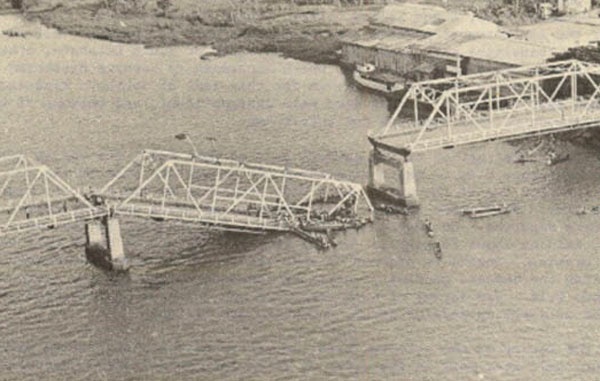LINEK, Datu Odin Sinsuat, Maguindanao (MindaNews/21 March 2011) — President Aquino wants a review of the country’s preparedness in dealing with earthquakes and tsunamis and the Senate wants a probe on the same matter, even as an apparently forgotten report on the “Moro Gulf Tsunami of 17 August 1976” written 33 years ago, had recommended simple but doable preparations on what to do and where to go, should a tsunami strike again.
The Moro Gulf, according to the 1978 report, “has been the most tsunami prone area of the Philippines” but in this village along the gulf, one of the hardest hit by the country’s “most disastrous” tsunami in 1976 (see other story), there are no tsunami warning and information signages, no drills, no sirens or other early warning devices.
“Magtakbo sa bundok” (run up to the mountain), said the children and adults who gathered to listen to the septuagenarian Ango Kalog relate to MindaNews what happened on August 17, 1976.
They pointed to what they refer to as the Rancho mountain some 600 meters away, Mt. Kabalalan behind it. “Wag lang doon sa maraming bato at baka matabunan tayo” (But not in the area where the rocks could fall).
Babu Minang Katug Blao, who lost consciousness when swept away by the tsunami in 1976, said children who are in school these days get briefings on what to do during an earthquake.
“Magtago sa ilalim ng mesa” (Hide under the table), she says, but there is no briefing on what to do during a tsunami. As a survivor, all she could say is run to the mountain but “avoid the rocks as there may be a landslide.”
Exactly where that “safe” area is, is everyone’s guess. (Read releated story)
“Kanya-kanya lang”
The March 11 earthquake and tsunami in Japan killed thousands of residents but Blao and Kalog agree that thousands were also saved because the Japanese had early warning systems and they knew what to do and where to go.
“Dito, magkanya-kanya na lang” (Here, it is to each his own), says Kalog.
The report on the 1976 tsunami, prepared by Victor L. Badillo and Zinnia C. Astilla of the Manila Observatory for the Special Committee on Tsunami Warning System, National Committee on Marine Sciences and the National Science Development Board, had actually recommended that “for the future, plans should aim for evacuation to higher ground within five minutes of a violent earthquake.”
 Bridge destroyed by the 1976 earthquake in Cotabato . Photo by G. Pararas-Carayannis posted in http://www.drgeorgepc.com/Tsunami1976Phillipines.html
Bridge destroyed by the 1976 earthquake in Cotabato . Photo by G. Pararas-Carayannis posted in http://www.drgeorgepc.com/Tsunami1976Phillipines.html
The Moro Gulf tsunami of 1976 was “the most disastrous” experienced by the Philippines, affecting 700 kilometers of coastline bordering the Moro Gulf.
“About 8,000 were dead or missing. About 10,000 were injured and about 90,000 were homeless,” the report said.
The report noted that there had been “more severe tsunamis, but areas hit were less populated and had less man-made structures.”
“A natural disaster is not merely a geophysical event but a human one as well. If any projection can be made it is this: What is now barren will be densely populated. Empty beaches will be filled with residences, tourist facilities, hotels, factories, power plants, etc.. Offshore, there will not be merely seaweed an oyster farms and fish corrals but also storage facilities, tank farms and the like. Thus, a tsunami prone coast is potentially a great disaster area,” the 1978 report said.
Local inundation maps
The report recommended that an “immediate and realizable goal” would be “to require local officials to prepare local inundation maps” which are basically “a street map of a town with dangerous areas to be evacuated crosshatched.”
“These maps can be drawn empirically by knowing which areas were inundated by past tsunamis. If there are contour maps available, one can determine all areas below a chosen height above sea level, for example six meters, as places to be evacuated,” the report said.
The maps, it added, could also be useful to “engineers, architects, land use planners, building code drafters, insurance agencies and the like.”
The report stressed that it is “impossible” for a national agency to provide warning to inhabitants about to be hit by a tsunami generated by a local earthquake.
“It would be fatal to wait for a radio broadcast and the like before moving into action. There is already a warning available, one provided by nature herself – the violent shock of an earthquake. If the shock is violent enough so that it is difficult to stand or walk then it is time to seek higher ground at once. Going to a higher ground will not mean going a long distance if local inundation maps exist and are known,” the report said.
But the report also noted that “it is one thing to have these maps and quite an altogether different thing for people to use them. What becomes clear is that education is needed, an extremely difficult task, a never finished task.” [slidepress gallery=’tsunami’]
Learning lessons, lessening losses
The report was prepared precisely to present findings about the 1976 tsunami “for a better understanding of it and that steps may be taken to lessen loss of lives and property in future tsunamis.”
It pointed out that because tsunamis do not come as often as typhoons, earthquakes or conflagrations, one consequence is lack of information and interest on the part of the general public.
The report noted that on August 17, 1977, the first anniversary of the tsunami, “there was not a single line in the Manila papers, except for a full page ad by BFAR (Bureau of Fisheris and Aquatic Resources) detailing rehabilitation in Bongo Island.”
MindaNews was able to reach Badillo, a Jesuit priest, astronomer, former director of the Manila Observatory (an asteroid was named in his honor in 2005 for having popularized astronomy in the Philippines), and inquired from him if government heeded their recommendations 33 years ago.
Badillo, now 81, told MindaNews in an e-mail that 1978 report “was written to be presented, and was presented, to an international meeting on tsunamis held in Manila” but “I do not know what has been done (to the recommendations).”
Badillo was a member of the National Tsunami Warning System Committee.
“The other members were all from the government, PHIVOLCS, Coast and Geodetic Survey (now NAMRIA), PAGASA, NDCC, PC (now National Police), Kapisanan ng Broadcasters ng Pilipinas and others,” he said.
Tsunami hazard maps
Thirty five years after the 1976 tsunami, residents in the tsunami prone areas like Linek, have yet to have an inundation map, even as the law on Disaster Reduction and Management of 2010, requires this.
The barangay captain was out of town when MindaNews visited Linek.
The National Disaster Risk Reduction and Management Council (formerly NDCC) has on its website hazard maps for earthquakes, storm surges, even a separate tsunami hazard map, but only for four provinces — Leyte, Southern Leyte, Surigao del Norte and Surigao del Sur. None for the Moro Gulf which, as the 1978 report indicated, is “the most tsunami-prone.”
But PHIVOLCS (Philippine Institute of Volcanology and Seismology), in cooperation with the Department of Science and Technology (DOST) has prepared tsunami hazard maps for coastal provinces dated December 2007 or 21 years after the 1976 tsunami, but only a few are aware these maps exist.
In Mindanao, tsunami hazard maps for 18 provinces, including Maguindanao, are available on the website. Told that Linek, a tsunami prone area, has no signages or early warning systems, Maguindanao Governor Esmael Mangudadatu told MindaNews Sunday that he will send personnel to check on Linek and the other coastal areas to ensure tsunami warning and information signages are put up where needed and to check on the areas’ disaster preparedness.
Badillo said the local inundation maps that the report recommended should be done “are really easy to make. The storm surge hazard maps are a good start. What is needed is to use a street map and superimpose on it a map that shows the heights above sea level, both of which already exist. Then on the assumption of a three meter height wave, one can see where one can run to.”
Badillo related that in Honolulu, another tsunami prone area, “there is a drill once a month.” “The hazard maps are useless if there are no drills,” he said.
PHIVOLCS reportedly conducts drills but residents in Linek said they have not had a tsunami drill.
“Tsunamis are rare. More frequent are fires, storm surges. Do we have fire drills? We need to develop a mentality of preparedness for all hazards. When we enter a movie house or a place with many people, the first thing to do is look for the fire exits. And check if the fire exits are not locked! In the US, more people die per year in traffic accidents than in the entire Vietnam war where soldiers were there to shoot and be shot. And most within five miles from home. I wonder what the figures are for the Philippines,” Badillo wrote MindaNews.
Moro Gulf’s tsunami history
He warned that “the submarine earthquakes that cause tsunami in the Moro Gulf and nearby have an average interval of about 17 years. So the area is already pregnant.”
Before the 1976 tsunami, the report done in 1978 listed four other submarine earthquakes of great magnitude that occurred “beneath the Moro Gulf area or the immediately neighboring Celebes Sea” — August 15, 1918 (8.3); March 14, 1913 (8.3); August 21, 1902 (7.25); September 21, 1897 (8.7); and September 20, 1897 (8.6). Tsunamis caused by submarine quakes of smaller magnitude happened on December 19, 1928 at magnitude of 7.25; March 2, 1923 (7.25); January 31, 1917 (7); ); August 21, 1902 (7.25); February 5, 1889; and December 21, 1636 or a frequency of “one every nine years.”
“What becomes apparent is that the Moro Gulf area has been the most tsunami prone area of the Philippines,” the report said.
The report quoted a 1977 statistical study of tsunamis in the Philippines by Nakamura, that found the Moro Gulf area to be “the most tsunami prone, followed by Eastern Mindanao, then Western Luzon.” The report said “further geological and seismological studies should indicate prospects of future activity in this area.”
Locals should take initiative
But Badillo told MindaNews that “we cannot wait for national action. I believe the local government units should take the initiative. Making the maps will not cost anything. It is having the drills that may cost money.”
Under Republic Act 10121 or the Philippine Disaster Risk Reduction and Management Act of 2010, local government units are mandated to set aside “not less than five per cent of the estimated revenues from regular sources” as Local Disaster Risk Reduction and Management Fund (formerly calamity fund) to “support disaster risk management activities such as, but not limited to, pre-disaster preparedness programs including training, purchasing life-saving rescue equipment, supplies and medicines, for post-disaster activities and for the payment of premiums on calamity insurance.”
The law mandates that 30 per cent of this fund be allocated as Quick Response Fund for relief and recovery programs.” Unspent funds shall accrue to a special trust fund “solely for the purpose of supporting disaster risk reduction and management activities of the local government unit within the next five years. Any amount not used after five years shall revert to the general fund and will be used for other social services.
House Bill 3813, however, wants this section repealed, a move opposed by DRRMnet, a coalition of DRRM advocates (see other story) who said is “driven by self-interest and abets corruption” (Carolyn O. Arguillas/MindaNews)
Related Links:
Babu Minang, survivor of 1976 tsunami: “Nothing was left
The 1976 tsunami: Maguindanao had highest death toll
Moro Gulf Tsunami of 17 August 1976: By Victor L. Badillo and Zinnia C. Astilla
Phivolcs’ Tsunami Information
The Earthquake and Tsunami of August 1976 in the Philippines
